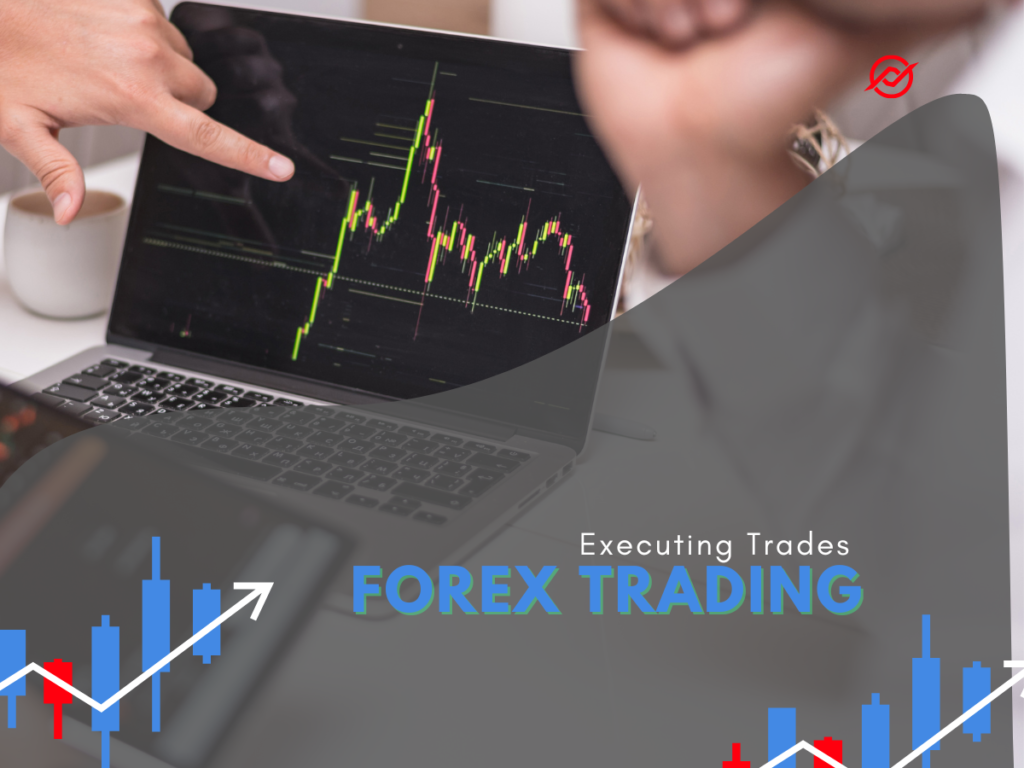Welcome to the fascinating world of forex trading, where the global currency market offers boundless opportunities for financial growth and strategic investment. For beginners stepping into the realm of forex trading, navigating through the complexities of this dynamic market might seem daunting at first glance. However, fear not! This comprehensive guide aims to demystify forex trading, providing you with a step-by-step roadmap to embark on your trading journey with confidence and clarity.
In today’s interconnected world, forex trading has emerged as one of the most accessible and lucrative avenues for individuals seeking to diversify their investment portfolios and capitalize on currency fluctuations. With a daily trading volume surpassing $6 trillion, the forex market stands as the largest financial market globally, offering ample liquidity and unparalleled market depth. Whether you’re a seasoned investor or a newcomer to the world of finance, understanding the fundamentals of forex trading is essential for unlocking its vast potential and harnessing the power of currency exchange.
As we delve deeper into this beginner’s guide, we’ll explore essential concepts such as opening a forex trading account, executing trades, and implementing effective risk management strategies. By the end of this journey, you’ll gain a solid understanding of how forex trading operates, equipping you with the knowledge and skills necessary to navigate the intricacies of the currency market confidently. So, buckle up and prepare to embark on an enriching expedition into the realm of forex trading, where every decision holds the promise of financial opportunity and growth.
Table of Contents
1. Understanding Forex Trading
Forex trading, also known as foreign exchange trading, is the process of buying and selling currencies in the global currency market. Unlike traditional stock trading, where investors buy and sell shares of companies, forex trading involves the exchange of one currency for another with the aim of profiting from fluctuations in exchange rates. The forex market operates 24 hours a day, five days a week, making it the most liquid and accessible financial market in the world. Its decentralized nature means that trading can occur around the clock, catering to traders from different time zones.
At the heart of forex trading lies the concept of currency pairs, which represent the relative value of one currency compared to another. Each currency pair consists of a base currency and a quote currency, with the exchange rate indicating how much of the quote currency is needed to purchase one unit of the base currency. For example, in the EUR/USD currency pair, the euro (EUR) is the base currency, and the US dollar (USD) is the quote currency. Understanding currency pairs is essential for analyzing price movements and making informed trading decisions in the forex market.
To succeed in forex trading, it’s crucial to grasp the factors that influence currency movements and market trends. Economic indicators, such as GDP growth, inflation rates, and employment data, play a significant role in shaping the value of currencies. Additionally, geopolitical events, central bank policies, and market sentiment can also impact exchange rates. Traders must stay informed about global economic developments and monitor market news to anticipate price movements and identify trading opportunities. By understanding the dynamics of the forex market, traders can develop effective trading strategies and manage risk effectively.
2. Setting Up Your Trading Account
Before delving into the world of forex trading, the first step is to set up a trading account with a reputable forex broker. Choosing the right broker is crucial, as they will serve as your gateway to the forex market. When selecting a broker, consider factors such as regulation, trading platform, customer support, and trading fees. Ensure that the broker is regulated by a reputable financial authority, as this provides a level of security and oversight for your funds. Additionally, opt for a trading platform that is user-friendly and offers advanced features for analysis and execution.
Once you’ve chosen a forex broker, the next step is to open a trading account. Most brokers offer different types of accounts to cater to traders with varying experience levels and investment sizes. Beginners may opt for a standard or mini account, which typically requires a lower initial deposit and offers smaller trade sizes. Advanced traders may prefer premium or VIP accounts, which often come with additional perks such as lower spreads and dedicated account managers. Take the time to carefully read and understand the terms and conditions of the account before proceeding.
After opening your trading account, you’ll need to fund it with capital to start trading. Most brokers offer a variety of funding methods, including bank wire transfers, credit/debit cards, and online payment processors. Choose the method that is most convenient and cost-effective for you, keeping in mind factors such as processing times and transaction fees. Once your account is funded, you’re ready to start trading forex. However, before jumping into live trading, it’s advisable to practice on a demo account first. Demo accounts allow you to trade with virtual funds in a simulated market environment, allowing you to hone your skills and test trading strategies without risking real money.
As you embark on your forex trading journey, remember that success in the markets requires patience, discipline, and continuous learning. Take the time to educate yourself about forex trading principles, technical analysis, and risk management strategies. Stay informed about market developments and economic indicators that may impact currency prices. By setting up your trading account thoughtfully and approaching forex trading with a structured plan, you’ll be better positioned to navigate the complexities of the market and achieve your financial goals.
3. Navigating Trading Platforms
Choosing the right trading platform is essential for successful forex trading, as it serves as your primary tool for analyzing the market, executing trades, and managing your portfolio. Forex trading platforms come in various forms, including desktop applications, web-based platforms, and mobile apps, each offering unique features and functionalities. When selecting a trading platform, consider factors such as user interface, charting capabilities, order execution speed, and compatibility with your trading style and preferences. Ensure that the platform provides access to a wide range of currency pairs, as well as advanced trading tools and technical indicators to aid your analysis.
Once you’ve selected a trading platform that meets your requirements, take the time to familiarize yourself with its features and functionalities. Most forex trading platforms offer customizable interfaces, allowing you to arrange charts, indicators, and trading tools according to your preferences. Spend time exploring the various features of the platform, such as order types, trade execution options, and risk management tools. Additionally, familiarize yourself with the platform’s customer support resources, as prompt assistance may be necessary in the event of technical issues or trading-related queries.
As you gain experience with your chosen trading platform, consider optimizing your workflow and refining your trading strategy based on your observations and results. Experiment with different charting techniques, timeframes, and trading indicators to identify patterns and trends in the market. Utilize the platform’s analytical tools and risk management features to enhance your decision-making process and protect your capital. By mastering the intricacies of your trading platform and leveraging its capabilities effectively, you’ll be better equipped to navigate the fast-paced world of forex trading and capitalize on profitable opportunities.
4. Executing Trades

Executing trades is a fundamental aspect of forex trading, where traders buy or sell currency pairs with the aim of profiting from price movements. The process of executing a trade involves entering an order into the market through your chosen trading platform. Before placing a trade, it’s essential to conduct thorough analysis of the market to identify potential opportunities and determine the optimal entry and exit points. Whether you’re employing technical analysis, fundamental analysis, or a combination of both, having a well-defined trading strategy is key to making informed trading decisions.
Once you’ve analyzed the market and identified a trading opportunity, the next step is to execute your trade through your trading platform. Most platforms offer various types of orders, including market orders, limit orders, and stop orders, each serving different purposes and allowing traders to manage their trades effectively. Market orders are executed at the current market price, while limit orders allow traders to specify the price at which they’re willing to buy or sell a currency pair. Stop orders, on the other hand, are used to limit losses or lock in profits by automatically executing a trade when the market reaches a specified price level.
After placing your trade, it’s crucial to monitor its progress and adjust your strategy accordingly. Keep a close eye on the market to track price movements and identify any changes that may affect your trade. Consider setting stop-loss and take-profit orders to manage risk and protect your capital. Additionally, stay informed about relevant news and economic developments that may impact currency prices. By staying proactive and vigilant, you’ll be better equipped to navigate the dynamic nature of forex trading and make timely adjustments to your trades as needed.
In conclusion, executing trades effectively is essential for success in forex trading. By conducting a thorough analysis, employing a well-defined trading strategy, and utilizing the features of your trading platform, you can make informed decisions and capitalize on profitable opportunities in the market. Remember to stay disciplined and patient, and always prioritize risk management to safeguard your capital. With practice and experience, you’ll develop the skills and confidence needed to navigate the complexities of forex trading and achieve your financial goals.
5. Managing Risk
In the world of forex trading, managing risk is paramount to long-term success and sustainability. The volatile nature of the forex market means that prices can fluctuate rapidly, leading to potential gains or losses for traders. Effective risk management involves implementing strategies to mitigate potential losses while maximizing profit potential. One of the key principles of risk management in forex trading is to never risk more than you can afford to lose. This involves determining an appropriate position size for each trade based on your account size and risk tolerance.
Another crucial aspect of managing risk in forex trading is setting stop-loss orders. A stop-loss order is a predetermined price level at which a trade will be automatically closed to limit losses. By setting stop-loss orders, traders can protect their capital and minimize the impact of adverse price movements. It’s important to place stop-loss orders at strategic levels, taking into account market volatility and the potential for price reversals. Additionally, consider trailing stop-loss orders, which adjust automatically as the market moves in your favor, locking in profits while still allowing for potential upside.
Diversification is another key strategy for managing risk in forex trading. Rather than putting all your capital into a single currency pair or trade, consider diversifying your portfolio across multiple currency pairs and asset classes. This helps spread risk and reduces the impact of a single trade gone wrong. Diversification can be achieved by trading different currency pairs with uncorrelated price movements or by incorporating other financial instruments such as stocks, commodities, or indices into your trading strategy.
Risk management is not only about minimizing losses but also about maximizing profits while preserving capital. Traders should strive to achieve a favorable risk-to-reward ratio for each trade, aiming for potential profits that outweigh potential losses. This involves identifying high-probability trading opportunities with favorable risk-to-reward ratios and avoiding trades with unfavorable risk-reward profiles. By adhering to sound risk management principles and implementing effective risk mitigation strategies, forex traders can navigate the challenges of the market with confidence and resilience.
Conclusion
In conclusion, forex trading offers a wealth of opportunities for individuals to participate in the global currency market and capitalize on fluctuations in exchange rates. Through this comprehensive guide, beginners have gained insight into the fundamental principles and essential strategies required to navigate the complexities of forex trading successfully. From understanding currency pairs and analyzing market trends to setting up a trading account and executing trades, each step in the trading process plays a crucial role in achieving trading success.
As traders continue their journey in forex trading, it’s essential to remain committed to continuous learning and improvement. The forex market is dynamic and ever-evolving, requiring traders to stay informed about global economic developments, market news, and emerging trends. By staying disciplined, patient, and adaptable, traders can enhance their skills and adapt to changing market conditions, thereby increasing their chances of success in forex trading.
Ultimately, success in forex trading hinges on a combination of knowledge, skill, and discipline. By adhering to sound trading principles, implementing effective risk management strategies, and maintaining a consistent trading plan, traders can navigate the challenges of the forex market with confidence and resilience. As traders gain experience and proficiency in forex trading, they can unlock the full potential of this dynamic and rewarding market, achieving their financial goals and realizing their dreams of trading success.






Pingback: Top 10 Strategies for Forex Traders to Overcome Fear, Greed, and Overtrading -